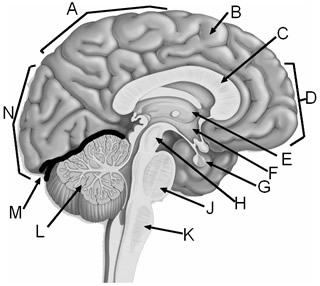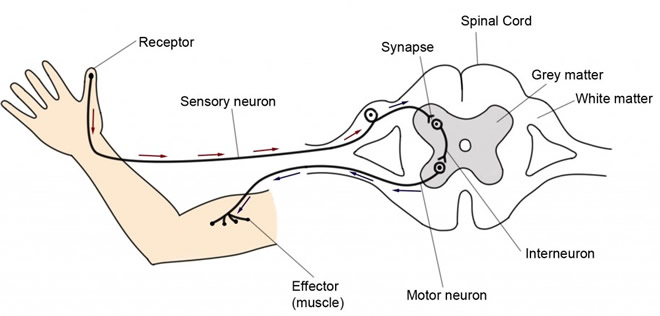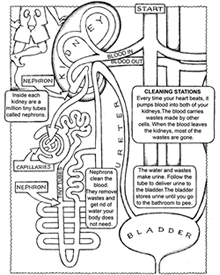AP Biology - Anatomy Unit
This unit is an abbreviated guide to anatomy and physiology. It includes a basic overview of the systems as well as specific concepts that are likely to be on the AP Biology test. The unit concludes with the dissection of the rat.
Levels of Organization
molecules --> cells --> tissues --> organs ---> systems --> organism
differentiation: cells become specialized to perform specific functions

Types of Tissues:
connective: bones, ligaments, blood
epithelial: covering of the body and of the organs
muscle: movement and support
nervous: brain and nerves (communication)
Body Systems
All of the body systems work together to maintain homeostasis
The regulation of the body's internal environment is dependent upon the activity of feedback loops
Negative Feedback: response to a stimulus that keeps a variable close to a set value

Examples: insulin and glucose; temperature regulation; oxygen levels and respiration rates
Positive Feedback: An event increases the likelihood of continuing the event, positive feedback loops increase intensity
Examples: suckling and prolactin, contractions uring childbirth, global warming*
Assignment: Feedback Loops: Interpreting Graphics
Much of the regulation occurs through the brain and through the endocrine system (hormones)
Musculoskeletal System
The function of these two systems is to provide support and for movement. The skeletal system is also involved in the production of red blood cells and the storage of minerals.
The skeleton of humans is homologous to the skeleton of other vertebrates
Assignment: Skeleton Comparisons
Nervous System

The human brain is the control center - all of the body's activities are coordinated in the brain, the Central Nervous System
The nerves the connect to the other parts of the body for receiving and sending information make up the Peripheral Nervous System
Autonomic Nervous System - conducts nerve impulses to organs and glands, not under voluntary control
Somatic Nervous System - voluntary control, muscles
Each part of the brain is responsible for different activities of the body (though there is a lot of overlap)
Cerebrum - large wrinkled structure, has several lobes, mainly responsible for higher level brain functions such as reasoning, language, problem solving, sight and hearing
Cerebellum - coordinates body movements
Brain Stem - consists of the medulla oblongata, hypothalamus, pons - the relay center that controls the body's basic functions, such as respiration and heart rat
Reflex Arcs
Reflexes occur quickly because they connect directly with the spinal cord which facilitated a response. For instance, when the skin touches something hot, the message is relayed to the spinal cord synapse and a signal is sent back to the mucles to withdraw from the stimulation.

The brain of the human is homologous to the brain of other vertebrates, with the major difference being the size of the cerebrum.
Assignment: Dissection of the Sheep Brain
Respiration & Circulation
The heart and lungs are closely associated, their main job is to obtain oxygen through respiration (lungs) and then circulate oxygen and other nutrients via the blood stream.
Double loop circulation: heart > lungs > heart > body
*Pay attention to the path the blood takes in the system*
Digestive System
The main job of the digestive system is to break down food and absorb nutrients.
It consists of the alimentary canal (the direct path food takes) and accessory organs (secretion)
The organs of the digestive system are homologous to the organs of other vertebrates. These organs will be viewed during the dissection of the rat.
Assignment: Digestive System Coloring
Urinary System
The urinary (excretory) system filters nitrogenous wastes from the blood and removes them. The main filtering organ is the kidney.
Kidney Poster (free from Dover Publications)

